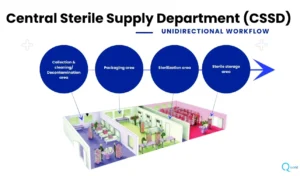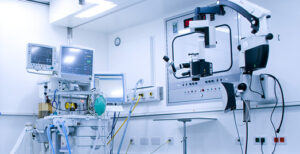Central Sterile Services Department (CSSD) design is crucial for ensuring the proper sterilization, storage, and distribution of medical instruments and equipment. A well-designed CSSD supports infection control, enhances workflow efficiency, and complies with healthcare regulations. Key elements of CSSD design include:
- Zoning: Establishing distinct areas for decontamination, cleaning, sterilization, and storage to prevent cross-contamination.
- Workflow Optimization: Designing a layout that supports a logical flow of instruments and materials, from dirty to clean, ensuring smooth operations.
- Equipment Integration: Incorporating advanced sterilization equipment such as autoclaves, washer-disinfectors, and ultrasonic cleaners, with consideration for space, ventilation, and maintenance requirements.
- Compliance and Safety: Ensuring the design meets regulatory standards for sterilization and staff safety, including adequate ventilation, air quality control, and waste management systems.
- Ergonomics and Staff Efficiency: Creating an environment that reduces physical strain on staff, with ergonomic workstations and adequate lighting.
Effective CSSD design is essential for maintaining high standards of hygiene, preventing healthcare-associated infections, and supporting the overall efficiency of healthcare operations.




